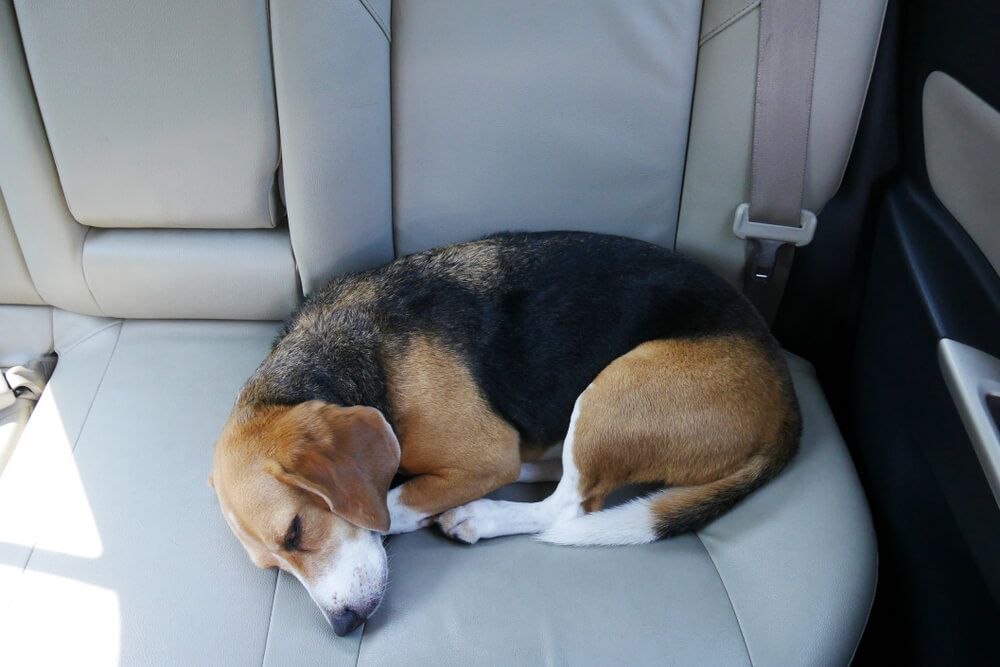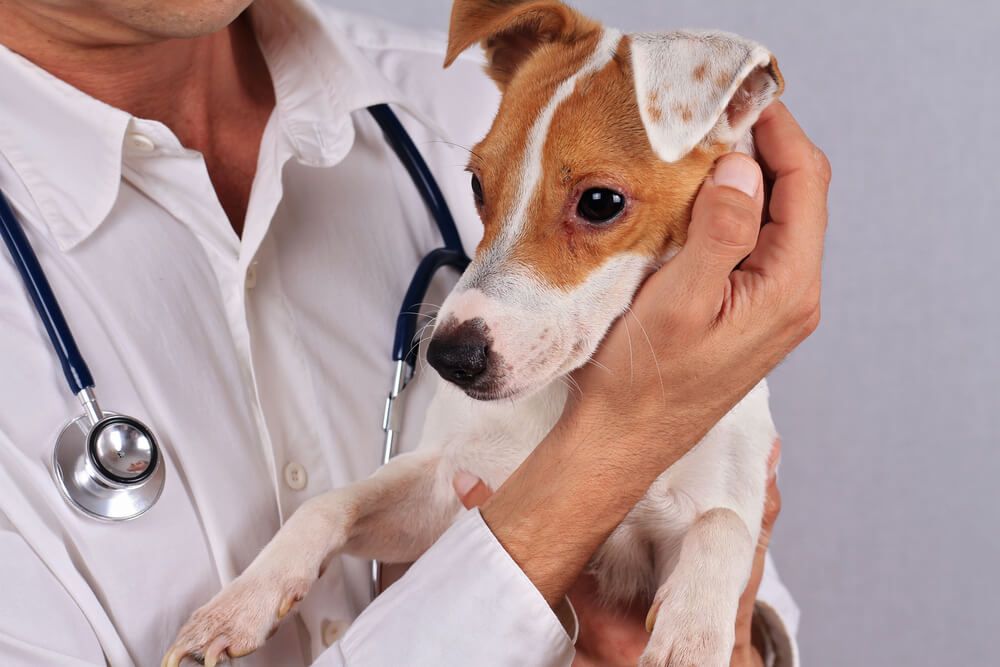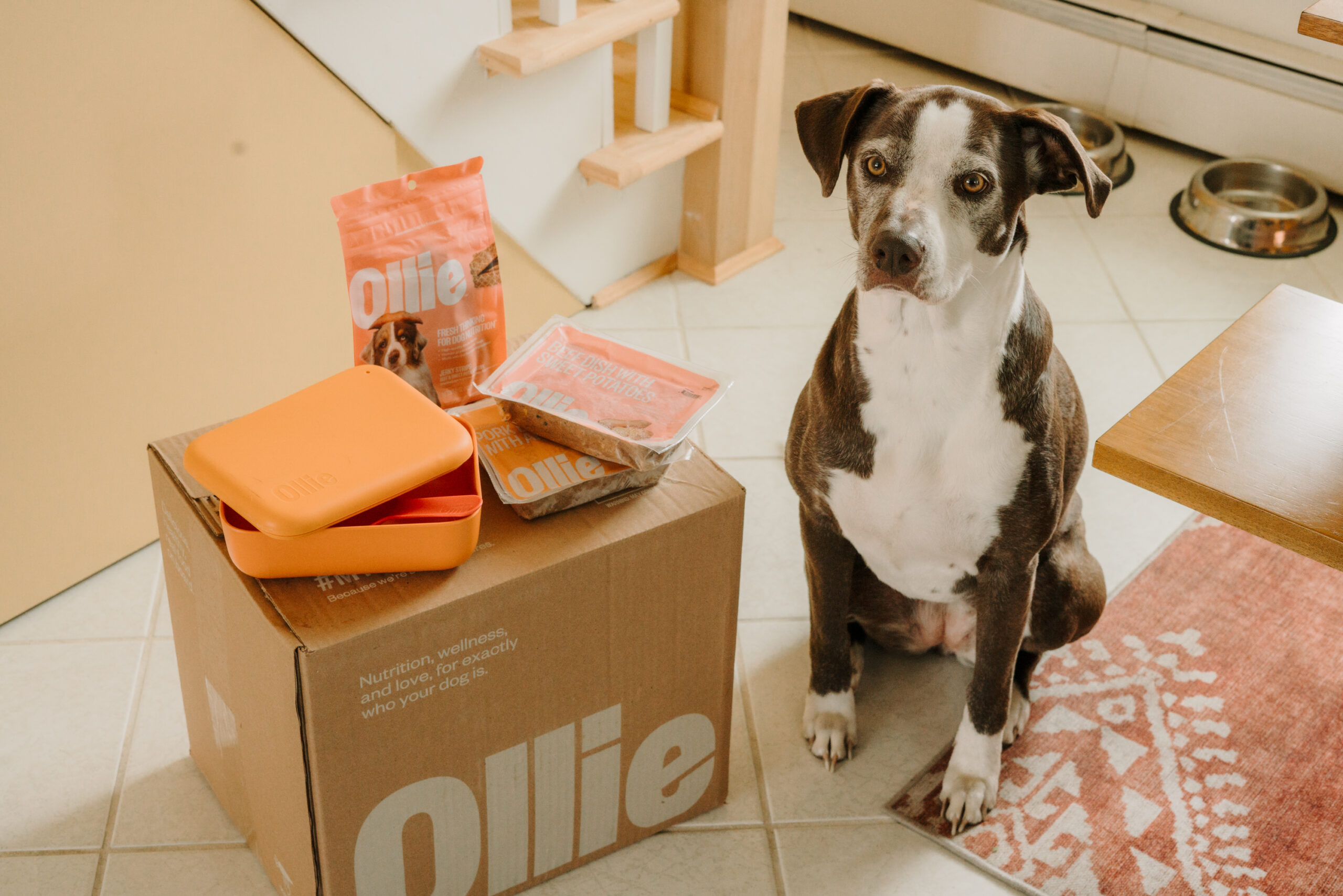Hey Ollie blog readers! We’re offering you an exclusive 60% OFF your starter box! Try now!
When you think of concussions, you probably think of football players, hockey players, or other elite athletes. It may have never occurred to you that your dog could get a concussion. You might not even know exactly what it means, other than having an understanding that it is an injury to the head. We did our research to break down everything you need to know about concussions and how to protect your dog.
What is a concussion?

According to the Concussion Legacy Foundation: “A concussion is a serious injury to the brain resulting from the rapid acceleration or deceleration of brain tissue within the skull. Rapid movement causes brain tissue to change shape, which can stretch and damage brain cells. This damage also causes chemical and metabolic changes within the brain cells, making it more difficult for cells to function and communicate.” In humans, the CDC estimates 3.8 million concussions occur each year.
Dogs can also get concussions as they are susceptible to injuries to their heads and brains.
3 common causes of concussions in dogs
1. Car Accident
Like in humans, one of the leading causes of concussions is auto accidents. A concussion can occur when a dog (or person) hits their head in a collision. For this reason, you should not drive with your dog unrestrained.
A crate or dog seatbelt can help minimize (but not completely eliminate the risk. In an accident, your dog can still hit their head on the crate or the seat of the car if the impact is great enough. Human passengers should also be reminded to wear seatbelts.
When driving, be alert and aware and refrain from calls or texting and driving. While these safety reminders may seem a little overkill, remember that you’re driving with precious cargo!!
2. Blunt force traumas
Blunt force traumas are a very general group of injuries. On the more extreme side, a concussion can happen from abuse. If a person hits a dog in the head hard enough they can suffer from a concussion… or worse.
Other examples of blunt force traumas include something falling, a dog knocking over a piece of heavy furniture on themselves, or even crashing into a glass door too hard. Whether an accident or on purpose, a blunt force trauma can result in a concussion.
3. Attacks from dogs or other animals
Dogs fighting is another way that they can get concussions or other injuries. Use extreme care when introducing your dog to other dogs, and don’t leave your dog unattended with a dog you (and they) don’t know. Whether you’re a multiple dog household, visit the dog park or utilize doggie daycare, these are all risks for dogs fighting. While good training and supervision will go a long way to prevent issues, you should always be on alert.
4. Falling or being dropped
In smaller breeds of dogs like chihuahuas, a common cause of concussions is falling or being dropped. This can happen if you (or someone else) is holding the dog and they wiggle out of your arms. Be especially carefully carrying your pup outside or up and down steps as uneven footing can cause you both to fall and injure both you and your dog.
Symptoms of concussions in dogs

1. Loss of consciousness
“One of the most common symptoms of canine concussions is an altered level of consciousness in which the dog seems sedated, noninteractive and less responsive to their surroundings. If you observe one or more of these signs in your dog, even if you have no idea how they were injured, it’s important to contact your veterinarian right away, since therapeutic intervention is most effective when it is instituted immediately.” Says Dr. Karen Becker.
2. Problems with walking or balance
A more subtle but still important symptom of concussion is issues with walking or balance. If you know (or suspect) that your dog has hit their head, watch for issues with walking and balance. If your dog has an uneven gait, that is another sign you will want to seek medical treatment.
3. Vomiting
While there are many reasons a dog might vomit, including the stress of an accident or a fight, it is still important to recognize that vomiting is a symptom of concussion. If your dog is vomiting along with any of the other symptoms listed here, call your vet as soon as you can and get your dog in for treatment.
4. Different sized pupils
Different sized pupils (one very small, the other larger), is a classic sign that a dog has suffered head trauma of some sort. There can also be rapid side-to-side or up-and-down movements of the eyes as if the dog is watching something moving very quickly, Dr. Becker explains.
Treatment options for dogs with concussions
If you suspect your dog has a concussion, call your vet as soon as possible to get an appointment.
Getting your dog to your vets office or an emergency facility needs to be done safely. Don’t restrain your dog or pull or pick them up by holding their head or neck. You might want to remove your dog’s collar since any compression of the neck can inhibit blood flow to the brain. If you need to keep your dog on a leash, try using a harness to attach it.
If your dog isn’t fully conscious, keep their head elevated at about a 30-degree angle to relieve pressure on the brain. If your pup can’t walk, you’ll want to keep them as still as possible, which means using a stretcher or something flat to get them in and out of your vehicle. The goal is to avoid manipulating your dog’s body as much as possible.
Once at the vet, your dog’s doctor will do an exam and determine the severity of the injuries. They will check your pup’s heart and lungs to make sure they are not impacted. They may provide IV fluids and antinausea medication.
Your vet may also want to keep your dog overnight for observation. This is to make sure symptoms don’t get worse and that your pup is supervised through the night.
Once your dog is discharged, be sure to follow any instructions from the vet. Keep all follow-up appointments and make sure to give any medication.
The Ollie blog is devoted to helping pet parents lead healthier lives with their pups. If you want to learn more about our fresh, human-grade food, check out MyOllie.com.
Tagged As:

The nutrition your dog needs,
the food they want.

Enjoying our articles? Subscribe our Newsletters and get new articles directly to your inbox
You might also like
4 June 2025
5 MINS READ
How Can Fresh Dog Food Help with Weight Management?
Maintaining a healthy weight is one of the most important aspects of your dog’s overall health and longevity. Being overweight or underweight can result in health complications and conditions that…
23 May 2025
5 MINS READ
Why Fresh Dog Food Makes Happier, Healthier Dogs That Live Longer
Every pup parent wants their dog to live a long, happy life, and the path to a healthier, happier dog starts with what’s in their bowl. Recent research and expert insights reveal that fresh dog …
by Ollie Pets
23 May 2025
8 MINS READ
Why Human-Grade Ingredients Matter for Dogs with Health Issues
For dogs with allergies, sensitive stomachs, or other health concerns, a higher quality of life starts with food made from higher quality ingredients. The right nutrition can make a significant di…
by Ollie Pets








